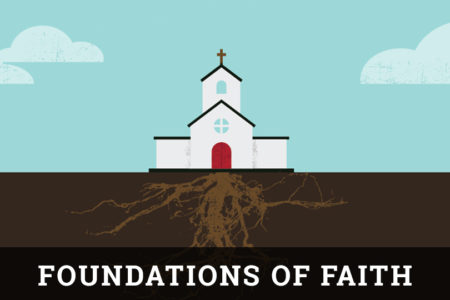Hillel: The Kind Pharisee
Jewish tradition states that the oral law was transmitted from Moses to Joshua, from Joshua to the elders, from the elders to the prophets, and from the prophets to the men of the great assembly (Knesseth Ha-Gadolah). The members of the great assembly, called Soferim, or scribes, were believed to have originated with Ezra and Nehemiah after the Babylonian Captivity. The identities of many of the scribes are unknown, but they left a legacy to “be deliberate in judgment, raise up many disciples, and build a fence around the law.” The “fence” would insure that the laws of God would not be broken because the laws of religious men would be placed “in front” of them. After several centuries, the Sanhedrin (consisting of 71 members) emerged and continued the unbroken line back to Moses.
The leaders of the Sanhedrin were the Rosh or Nasi (president) and the Ab Beth Din (Father of the House of Judgment). Together they were called Zugoth or “pairs” of teachers. They passed two laws that influence Judaism to this day. The first was compulsory provision for the education of children with no fathers, and the second was that there be a school in every community with at least ten families. These laws would guarantee that young Jewish boys would grow up knowing their prayers and Torah. “Torah Tzivah Lanu Moshe Morasha Kehilat Ya’akov”—The Torah which Moses taught us is the inheritance of the Jewish people.
The rule of the Sanhedrin by the Zugoth lasted for five generations. The most famous of these great teachers was Hillel. Referred to as the “elder” (Zaken) or the “Babylonian,” he served as the last Rosh of the Sanhedrin from 30 B.C. to 10 A.D. These years were strategic in Israel’s religious history. Herod was ruling in Jerusalem, the Pharisees and Sadducees had begun to develop gaping rivalries, the priesthood was deteriorating, and Messianic hopes were high. Hillel’s rise to leadership came as a result of three notable characteristics: his love for the Torah, his love for wisdom, and his love for mankind. Stories about Hillel abound, and they usually highlight one of these characteristics.
At the age of 40, Hillel left Babylon to pursue studies in Israel, in the school of Sehmaya and Abtalyon. Unable to pay the admission fee to the academy, tradition asserts that he climbed to the roof to a skylight, where he could hear the lecture of the great teachers. Deeply engrossed in the lecture, the young scholar did not notice that a heavy snow had begun to fall. When the teachers looked up to see the snow through the skylight, they saw the shadow of a man. The snow had completely covered him, but his love of learning was so intense that he never noticed. Hillel pursued any field of study that would help him to magnify and exalt the Torah. He became so highly regarded that it was said of him, “He was worthy of having the Sabbath profaned on his behalf.” It is even said that he personally instructed Jesus of Nazareth.
Hillel made two notable contributions to Judaism. He was the creator of the tannaim (rabbis). The tannaim interpreted the Torah for the next 210 years, until the completion of the Mishna. He also divided the oral law into six divisions that provided the framework for the tannaim to complete the mishna. In addition, he instituted seven middot, or measurements, to study the Talmud. These rules are used to this day to study the Talmud.
The Ab Beth Din, or second in command to Hillel, was a sage named Shammai. He too was highly respected, but his views of the laws and his personality were more stringent than those of Hillel. There are many stories concerning differences between Shammai and Hillel. For instance, a heathen came to Shammai and asked, “Can you tell me the whole Torah while I stand on one foot?” Shammai thought the man was making sport of him and drove him away.
The man then went to Hillel and asked the same question. Hillel’s response: “Do not unto others what you would not have others do unto you. All the rest is commentary.” The man was amazed (Shabbath 31:1). This became the golden rule for Judaism—a negative formulation of the golden rule given by Jesus in Matthew 7:12.
For the most part, Hillel’s rulings were accepted over Shammai’s—many believe because of his simplicity, kindness, and humility. According to the Midrash, “The words of both schools are the words of the living God, but the Law follows the ruling of the school of Hillel because the Hillelites were gentle and modest, and studied both their own opinions and opinions of the other school and humbly mentioned the words of the other school before theirs.”
One of Hillel’s most important rulings concerned forgiveness of debts in the sabbatical (seventh) year. A lender would not lend money if he knew the sabbatical year was near. Hillel did not want to break a command of God, yet circumstances were such that hardships were created. He thus ruled that a loan could be given without being forgiven if a third party, such as a court, collected the money and gave it to the lender. Hillel found a way out.
That “way out” would characterize Hillel’s style and Judaism to this very day. It certainly is indicative of another famous statement attributed to Hillel: “If I am not for myself—who is for me? and being for my own-self—what am I? and if not now—when?”
It is important to understand Hillel and his teachings because they give insight into the way Jewish people think religiously. There is no better illustration of this than in the closing paragraph of The Jewish People, the elementary history book used in my Hebrew school (italics mine): “Hillel’s method of explaining the law appealed to the people, and his decisions were accepted everywhere. Not only his own generation, but future generations as well, lived by the rules Hillel had made. When times changed, other teachers followed Hillel’s method. They explained the laws so that people could live by the Torah even when conditions changed.”
There is no doubt that Hillel was a knowledgeable, kind, and pious person—a man due great respect. His method of adaptation to the changing times was the prescription for a moving toward the only truth. Times certainly change, but God’s Word never does.









Who did the Pharisees of Jesus’ time follow more, Shammai or Hillel?
So, then HILLEL II was indeed a pharisee. Jesus tells us to beware their doctrines in the book of Matthew. The Hillel calendar contradicts the Biblical calendar used by Jesus.
I would like to study Hillel more, to understand how Jews in Jesus’ time thought. I am doing a study on James and I assume his letter reflects Hillel’s teaching. Can you recommend a book on this, that I can purchase. Thanks